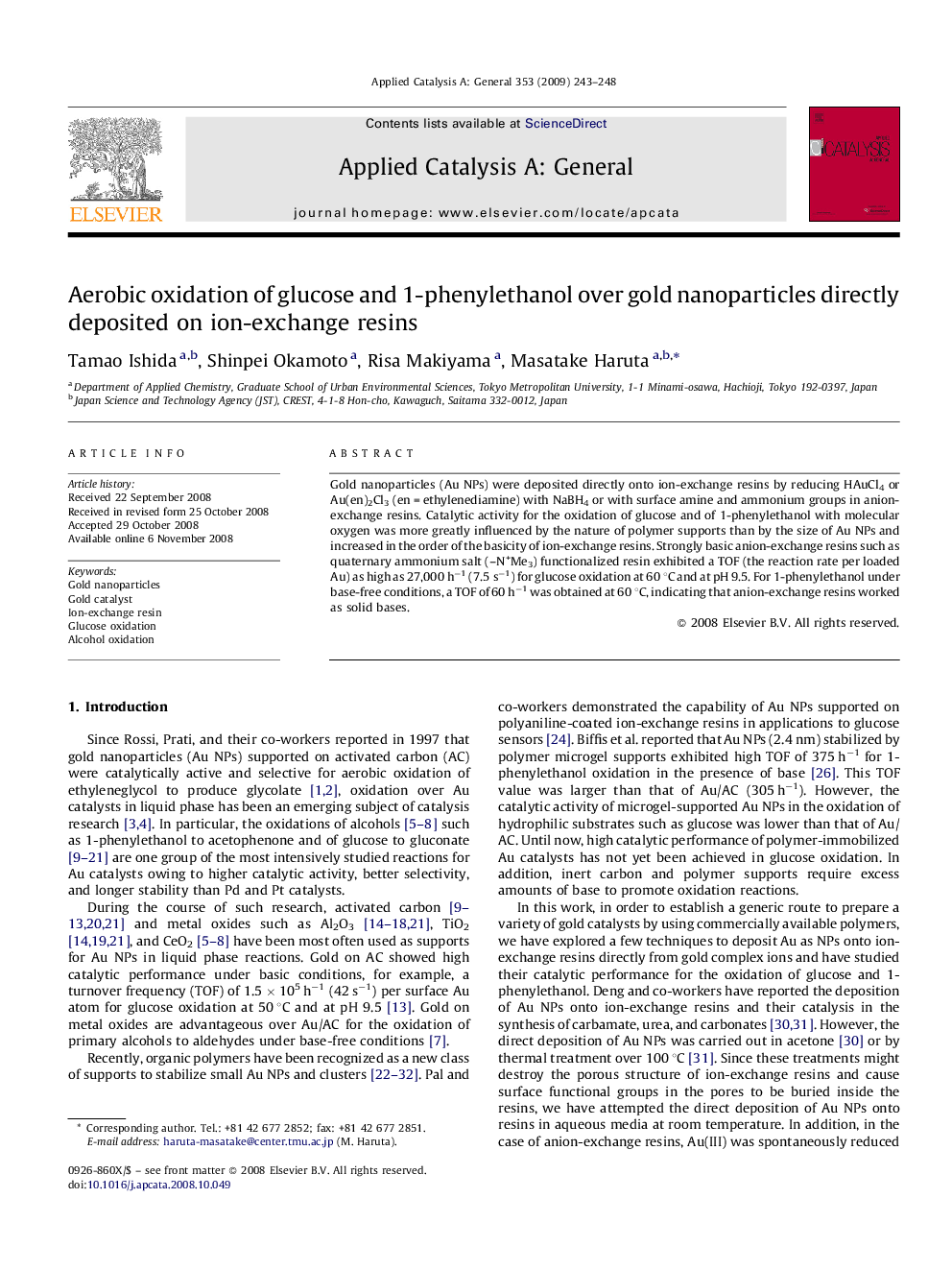| Article ID | Journal | Published Year | Pages | File Type |
|---|---|---|---|---|
| 42947 | Applied Catalysis A: General | 2009 | 6 Pages |
Gold nanoparticles (Au NPs) were deposited directly onto ion-exchange resins by reducing HAuCl4 or Au(en)2Cl3 (en = ethylenediamine) with NaBH4 or with surface amine and ammonium groups in anion-exchange resins. Catalytic activity for the oxidation of glucose and of 1-phenylethanol with molecular oxygen was more greatly influenced by the nature of polymer supports than by the size of Au NPs and increased in the order of the basicity of ion-exchange resins. Strongly basic anion-exchange resins such as quaternary ammonium salt (–N+Me3) functionalized resin exhibited a TOF (the reaction rate per loaded Au) as high as 27,000 h−1 (7.5 s−1) for glucose oxidation at 60 °C and at pH 9.5. For 1-phenylethanol under base-free conditions, a TOF of 60 h−1 was obtained at 60 °C, indicating that anion-exchange resins worked as solid bases.
Graphical abstractGold nanoparticles were deposited directly onto ion-exchange resins by reducing HAuCl4 or Au(en)2Cl3, exclusively on the resin surfaces. Gold nanoparticles deposited on a strongly basic anion-exchange resin exhibited high catalytic activity for glucose oxidation with a TOF as high as 27,000 h−1 at 60 °C and at pH 9.5.Anion-exchange resin supported Au nanoparticles also catalyzed the oxidation of 1-phenylethanol under base-free conditions.Figure optionsDownload full-size imageDownload as PowerPoint slide
